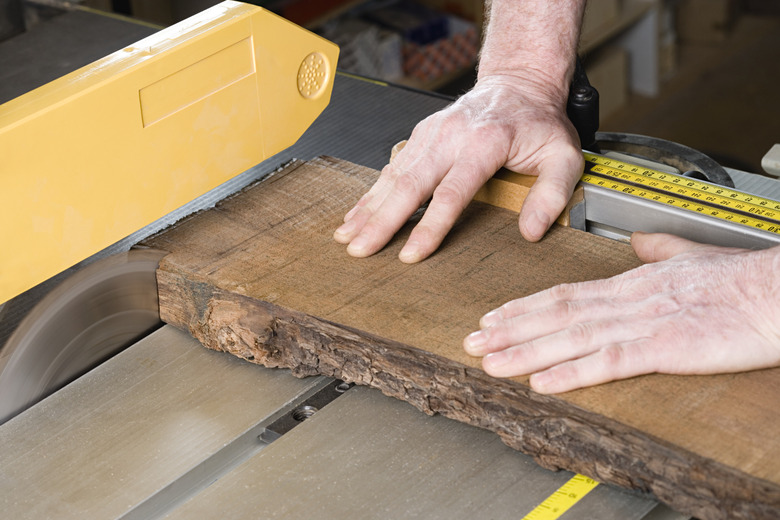The Best Way To Cut Hardboard
Things Needed
-
Carbide-tipped ATB table saw blade
-
Table saw
-
Sawhorses
-
Carbide-tipped ATB circular saw blade
-
Clamps
-
3/4-by-4-inch plywood
-
Fine-tooth jigsaw blade
-
Jigsaw
-
100-grit sandpaper
Tip
Cut slowly and deliberately. If you see smoke or the hardboard chatters when you're cutting it, check the fence alignment on the table saw for squareness. Check the sharpness of the blade and replace it with a sharp one if necessary.
Warning
Hardboard — although not hazardous before cutting — emits airborne particles when cut or sanded that can cause respiratory issues. Wear breathing and eye protection when working with hardboard. Use care when handling carbide-tipped blades. Carbide is fragile and can shatter.
Hardboard is created from wood fibers, adhesive, hydraulic pressure and heat. It's used in the building industry for crafting and cabinets, and anywhere a durable, affordable surface material is needed. It has no grain and can be cut in any direction. Because it is a composite material, hardboard can sometimes mushroom along the edges of cuts. The material should be oriented so that the saw teeth are entering the wood into the finished side and saw blades should have a high number of teeth. The best way to cut straight lines is with a table saw or circular saw equipped with a carbide blade. The best way to cut curved lines is with a jigsaw and a fine-tooth blade.
Table Saw Straight Cuts
Step 1
Install an alternate-top-bevel carbide-tipped saw blade on a table saw. The blade should have between 80 and 100 teeth.
Step 2
Set the fence at the desired measurement. The table saw should have support sawhorses at the side and on the end opposite the operator.
Step 3
Place the hardboard face up on the saw. The face is slick and shiny, the back has a textured appearance.
Step 4
Turn on the saw and slide the hardboard over the saw blade with both hands, using an assistant to help you support it if needed.
Circular Saw Straight Cuts
Step 1
Install an alternate bevel carbide-tipped saw blade on a circular saw. The blade should have at least 50 teeth — the more teeth the cleaner the cut.
Step 2
Clamp the hardboard face down to two sawhorses. Clamp a 3/4-inch-thick strip of scrap plywood across the hardboard where the blade will cut, allowing for the width of the guide on the saw. The plywood will hold the hardboard edge stable, so that it is less likely to mushroom.
Step 3
Turn on the circular saw and cut across the hardboard, holding the saw so that the guide of the saw remains flush against the plywood. Use an assistant to help support falling pieces if necessary.
Jigsaw
Step 1
Install a fine-tooth blade on a jigsaw — the higher the tooth count the cleaner the cut.
Step 2
Draw the desired pattern on the back of the hardboard.
Step 3
Clamp the hardboard face down across two sawhorses. For large pieces, use four or more sawhorses. Place the clamps as close to the cut line as possible.
Step 4
Turn on the saw and guide the blade along the cut line slowly, using an assistant to help support the hardboard if necessary. Move the clamps if necessary or if the hardboard begins to bounce or chatter. You may need to sand the edges lightly with 100-grit sandpaper after cutting.
